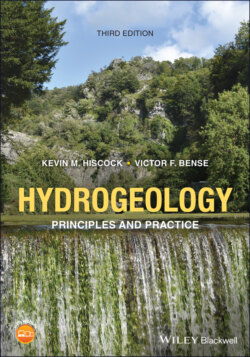Читать книгу Hydrogeology - Kevin M. Hiscock - Страница 21
Box 1.1 The aqueducts of Rome
ОглавлениеThe aqueducts of ancient Rome are often associated with Roman expertise in civil engineering, and the fact that most of the aqueducts are supplied by springs is a tribute to the importance of groundwater in sustaining human civilization (Deming 2020). The remarkable organization and engineering skills of the Roman civilization are demonstrated in the book written by Sextus Julius Frontinus and translated into English by Bennett (1969). In the year 97 AD, Frontinus was appointed to the post of water commissioner, during the tenure of which he wrote the De Aquis. The work is of a technical nature, written partly for his own instruction, and partly for the benefit of others. In it, Frontinus painstakingly details every aspect of the construction and maintenance of the aqueducts existing in his day.
For more than 400 years, the city of Rome was supplied with water drawn from the River Tiber, and from wells and springs. Springs were held in high esteem, and treated with veneration. Many were believed to have healing properties, such as the springs of Juturna, part of a fountain known from the south side of the Roman Forum. As shown in Fig. 1.5 and illustrated in Plate 1.2, by the time of Frontinus, these supplies were augmented by several aqueducts, presumably giving a reliable supply of good quality water, in many cases dependent on groundwater. For example, the Vergine aqueduct brought water from the estate of Lucullus where soldiers, out hunting for water, were shown springs which, when dug out, yielded a copious supply. Frontinus records that the intake of Vergine is located in a marshy spot, surrounded by a concrete enclosure for the purpose of confining the gushing waters. The length of the water course was 14 105 paces (20.9 km). For 19.1 km of this distance the water was carried in an underground channel, and for 1.8 km above ground, of which 0.8 km was on substructures at various points, and 1.0 km on arches. The source of the Vergine spring, located approximately 13 km east of Rome in the small town of Salone, is shown on a modern hydrogeological map (Boni et al. 1986) as issuing from permeable volcanic rocks with a mean discharge of 1.0 m3 s−1 (Fig. 1.5). Frontinus also describes the Marcia aqueduct with its intake issuing from a tranquil pool of deep green hue. The length of the water‐carrying conduit is 61 710½ paces (91.5 km), with 10.3 km on arches. Today, the source of the Marcia spring is known to issue from extensively fractured limestone rocks with a copious mean discharge of 5.4 m3 s−1.
Fig. 1.5 Map of the general geology in the vicinity of Rome showing the location of the spring sources and routes of Roman aqueducts (Bennett 1969 and Boni et al. 1986).
(Sources: Based on Bennett, C.E. (1969) Frontinus: The Stratagems and the Aqueducts of Rome. Harvard University Press, Cambridge, Massachusetts; Boni, C., Bono, P. and Capelli, G. (1986) Hydrogeological Scheme of Central Italy. Sheet 1 (A. Hydrogeological Map). Memoir of the Geological Society of Italy XXXV, Geological Society of Italy, Rome.)
After enumerating the lengths and courses of the several aqueducts, Frontinus enthuses: ‘with such an array of indispensable structures carrying so many waters, compare, if you will, the idle Pyramids or the useless, though famous, works of the Greeks!’ To protect the aqueducts from wilful pollution, a law was introduced such that: ‘No one shall with malice pollute the waters where they issue publicly. Should any one pollute them, his fine shall be 10 000 sestertii’ which, at the time, was a very large fine. Clearly, the ‘polluter pays’ principle was readily adopted by the Romans! Further historical, architectural and engineering details of the ancient aqueducts of Rome are given by Bono and Boni (2001) and Hodge (2008).
The Vergine aqueduct is one of only two of the original aqueducts still in use. The name derives from its predecessor, the Aqua Virgo, constructed by Marcus Agrippa in 19 BC. The main channels were renovated and numerous secondary channels and end‐most points (mostre) added during the Renaissance and Baroque periods, culminating in several fountains, including the famous Trevi fountain completed in 1762 (Plate 1.3). The total discharge of the ancient aqueducts was in excess of 10 m3 s−1 supplying a population at the end of the first century AD of about 0.5 million. Today, Rome is supplied with 23 m3 s−1 of groundwater, mainly from karst limestone aquifers, and serving a population of 3.5 million (Bono and Boni 2001). Many of the groundwater sources are springs from the karst system of the Simbruini Mountains east of Rome.
